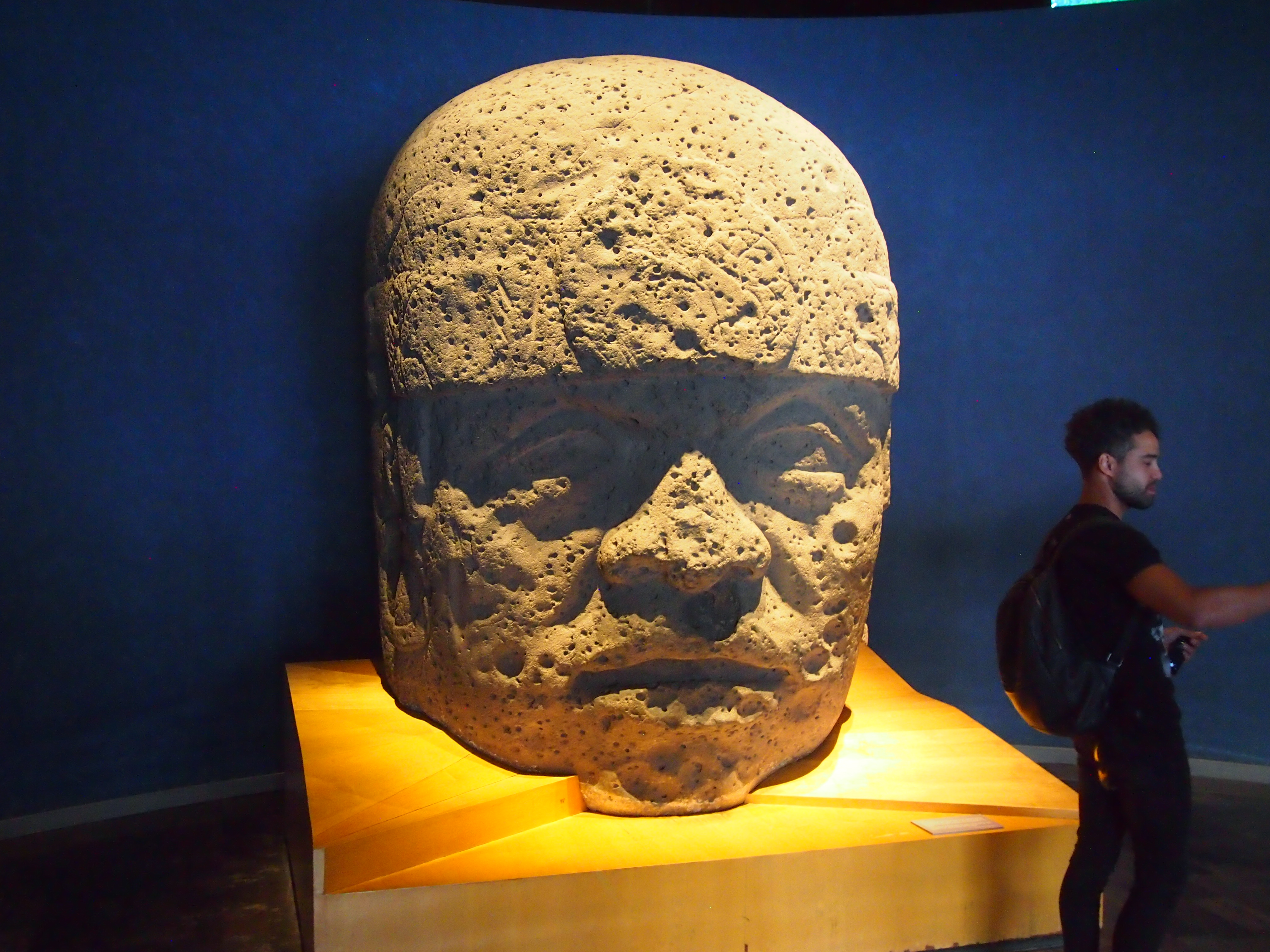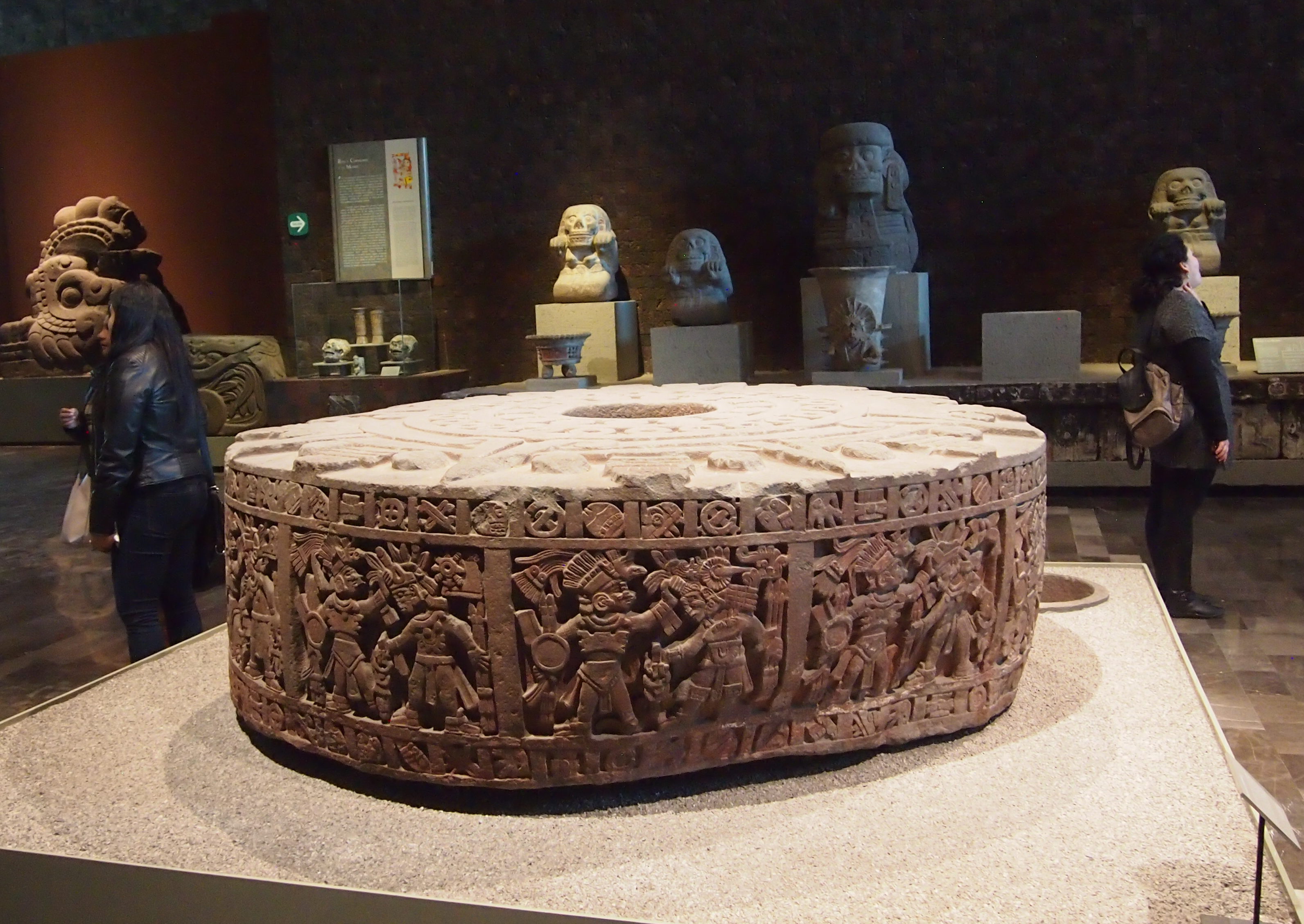Mexico’s National Museum of Anthropology, the Museo Nacional de Antropologia, is also in Chapultepec Park, not too far from Castillo de Chapultepec. The park was fairly busy three days after Christmas.
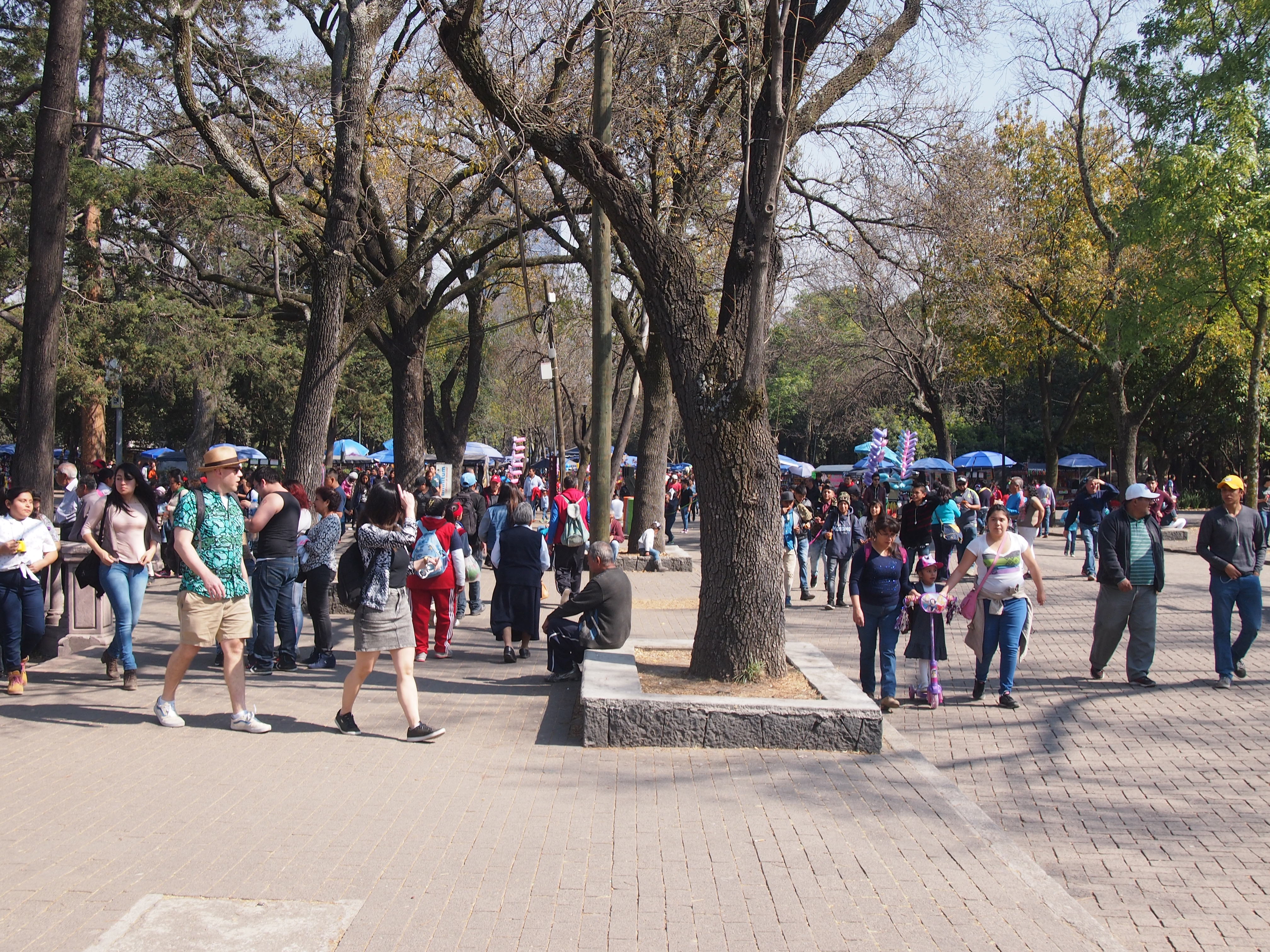 Maybe the park is always busy on nice days. It’s a nice park, with a lot of recommend it, including water features.
Maybe the park is always busy on nice days. It’s a nice park, with a lot of recommend it, including water features.
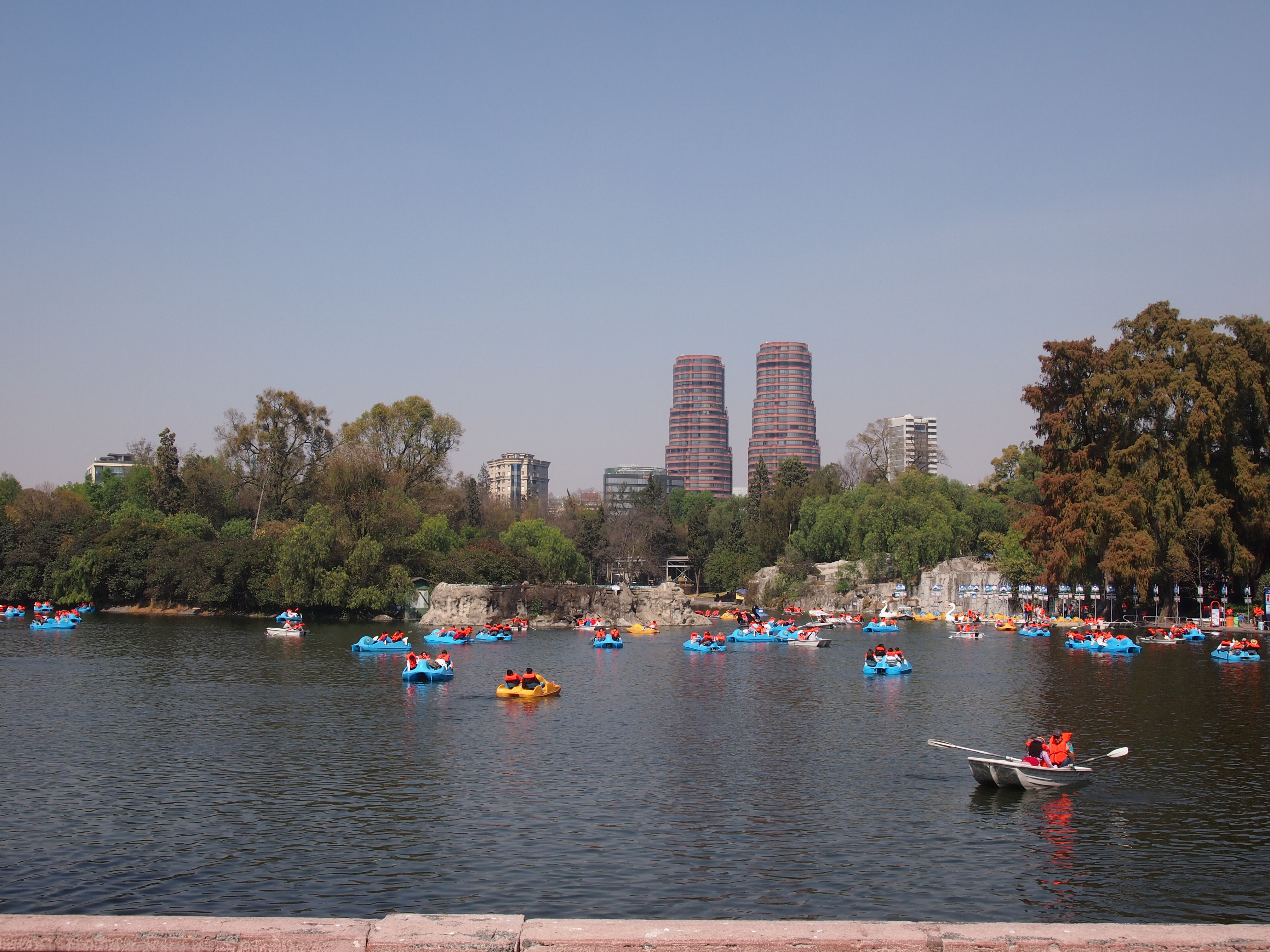 On the other hand, the week between Christmas and New Year’s is reputedly a fairly busy one for travel within Mexico. Many residents of Mexico City leave for vacation spots on the coast, and people who live in other parts of Mexico come to the big city, so that might have added to crowds at Chapultepec Park and some of the other sites we went to.
On the other hand, the week between Christmas and New Year’s is reputedly a fairly busy one for travel within Mexico. Many residents of Mexico City leave for vacation spots on the coast, and people who live in other parts of Mexico come to the big city, so that might have added to crowds at Chapultepec Park and some of the other sites we went to.
Interestingly, the two main languages I heard in passing at the Museo Nacional de Antropologia were Spanish and American English. Not as much British English or French or German or Japanese as I’d expect in a museum of its high calibre. You can’t go into the Art Institute of Chicago on a busy day, for instance, and not overhear Frenchmen and -women or spot gaggles of Japanese in their tour groups.
Maybe August is when the Euro-tourists come in numbers to Mexico City, and the Japanese as well, during O-Bon. Or maybe Mexico City isn’t quite the draw that Mexican beaches are.
The National Museum of Anthropology is a creation of the 1960s, and looks every bit of it. The building was designed by Pedro Ramírez Vázquez — who also collaborated on the New Basilica of Our Lady of Guadalupe, more about which later — Jorge Campuzano, and Rafael Mijares Alcérreca.
This is the view from the back of the sizable interior courtyard, looking at a mammoth example of modernist construction.
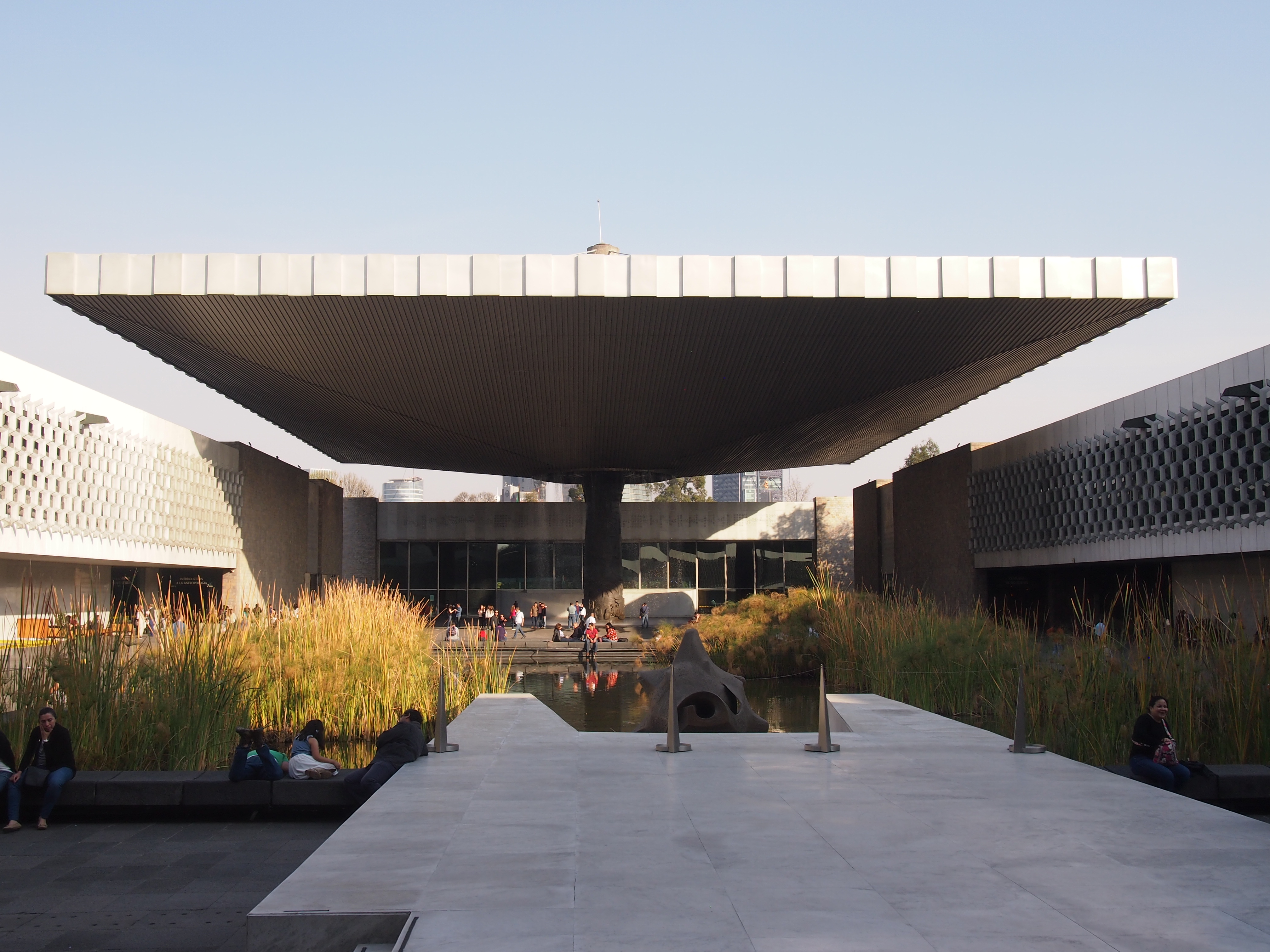 The hefty structure perched over the courtyard, which got me thinking about the potential for seismic activity, at least while I was standing under the thing, is known as el paraguas, the umbrella.
The hefty structure perched over the courtyard, which got me thinking about the potential for seismic activity, at least while I was standing under the thing, is known as el paraguas, the umbrella.
This is what the shaft looks like from closer up. A stone umbrella shaft.
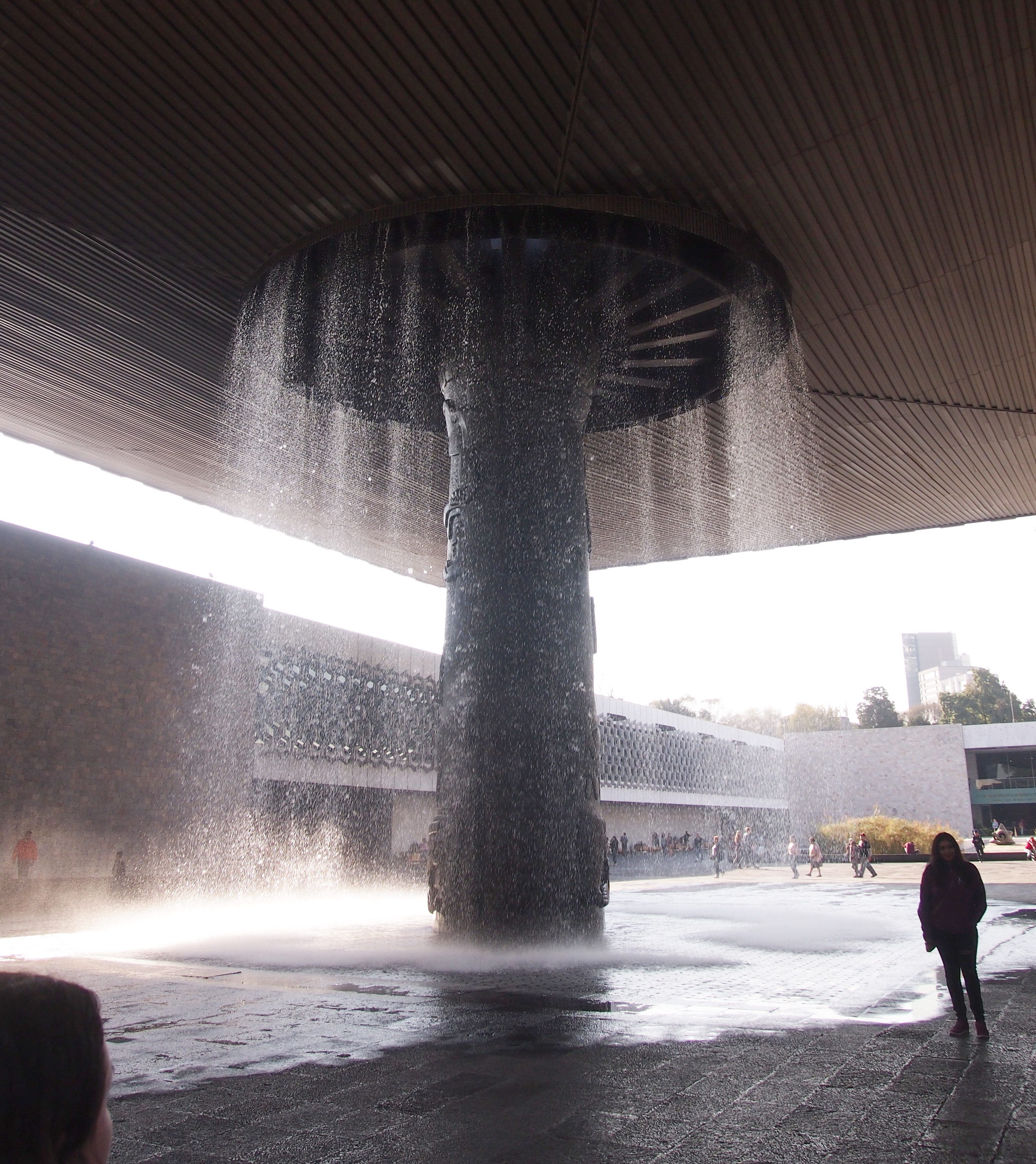 The light was poor for photography as I stood under it; this is a better image of el paraguas, through which steady cascades of water rush to the ground. Maybe “umbrella” is a wry Mexican joke on the nation’s uneven infrastructure.
The light was poor for photography as I stood under it; this is a better image of el paraguas, through which steady cascades of water rush to the ground. Maybe “umbrella” is a wry Mexican joke on the nation’s uneven infrastructure.
The museum’s exhibition halls surround the courtyard — 23 rooms in all, displaying a vast array of artifacts from all over the country and across millennia, including but hardly limited to such diverse peoples as Olmecs, Zapotecs, Toltecs, Mayans and of course Aztecs (please to call them the people of Mexia), whose hall has a place of prominence at the back.
The museum has possession of more than 7 million archaeological pieces and over 5 million ethnological pieces, so the best any single person, even a curious one, can hope for is an interesting sample. Such as at any mega-museum. I feel like we got a good sample, such as bones and artifacts from the Tlatilco culture, which flourished in the Valley of Mexico around 3,000 years ago.
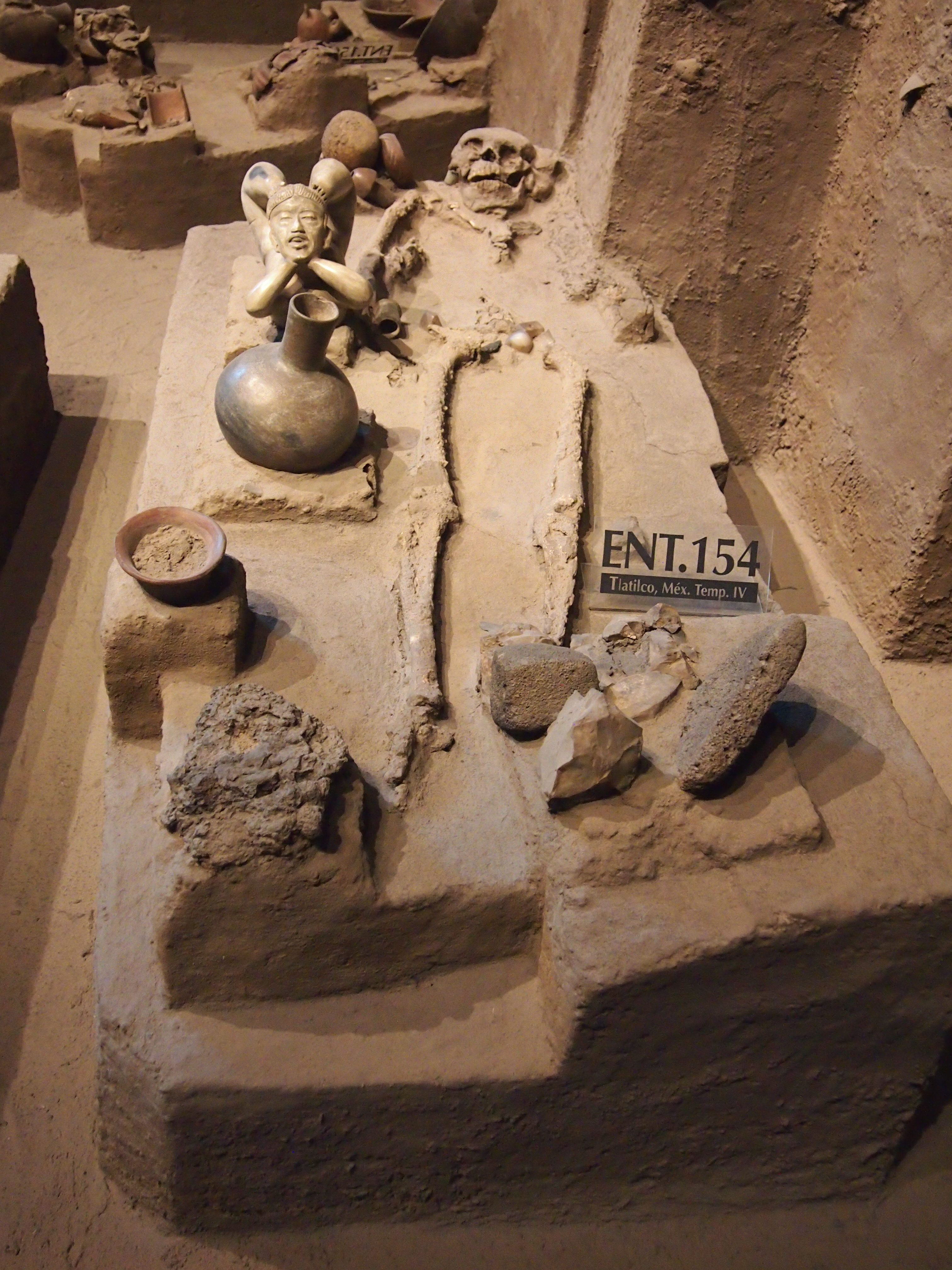 A Cabeza Colosal of the Olmecs, 1200-600 BCE, found near Veracruz. Colossal head indeed.
A Cabeza Colosal of the Olmecs, 1200-600 BCE, found near Veracruz. Colossal head indeed.
Specifically, the San Lorenzo Colossal Head 2 (also known as San Lorenzo Monument 2). To quote Wiki, it “was reworked from a monumental throne. The head stands 2.69 metres (8.8 ft) high and measures 1.83 metres (6.0 ft) wide by 1.05 metres (3.4 ft) deep; it weighs 20 tons. Colossal Head 2 was discovered in 1945 when Matthew Stirling’s guide cleared away some of the vegetation and mud that covered it.
“The monument was found lying on its back, facing the sky, and was excavated in 1946 by Stirling and Philip Drucker. In 1962 the monument was removed from the San Lorenzo plateau in order to put it on display as part of “The Olmec tradition” exhibition at the Museum of Fine Arts in Houston in 1963. San Lorenzo Colossal Head 2 is currently in the Museo Nacional de Antropología in Mexico City.”
A sculpture from Teotihuacan featuring Mictlantecutli, god of the dead.
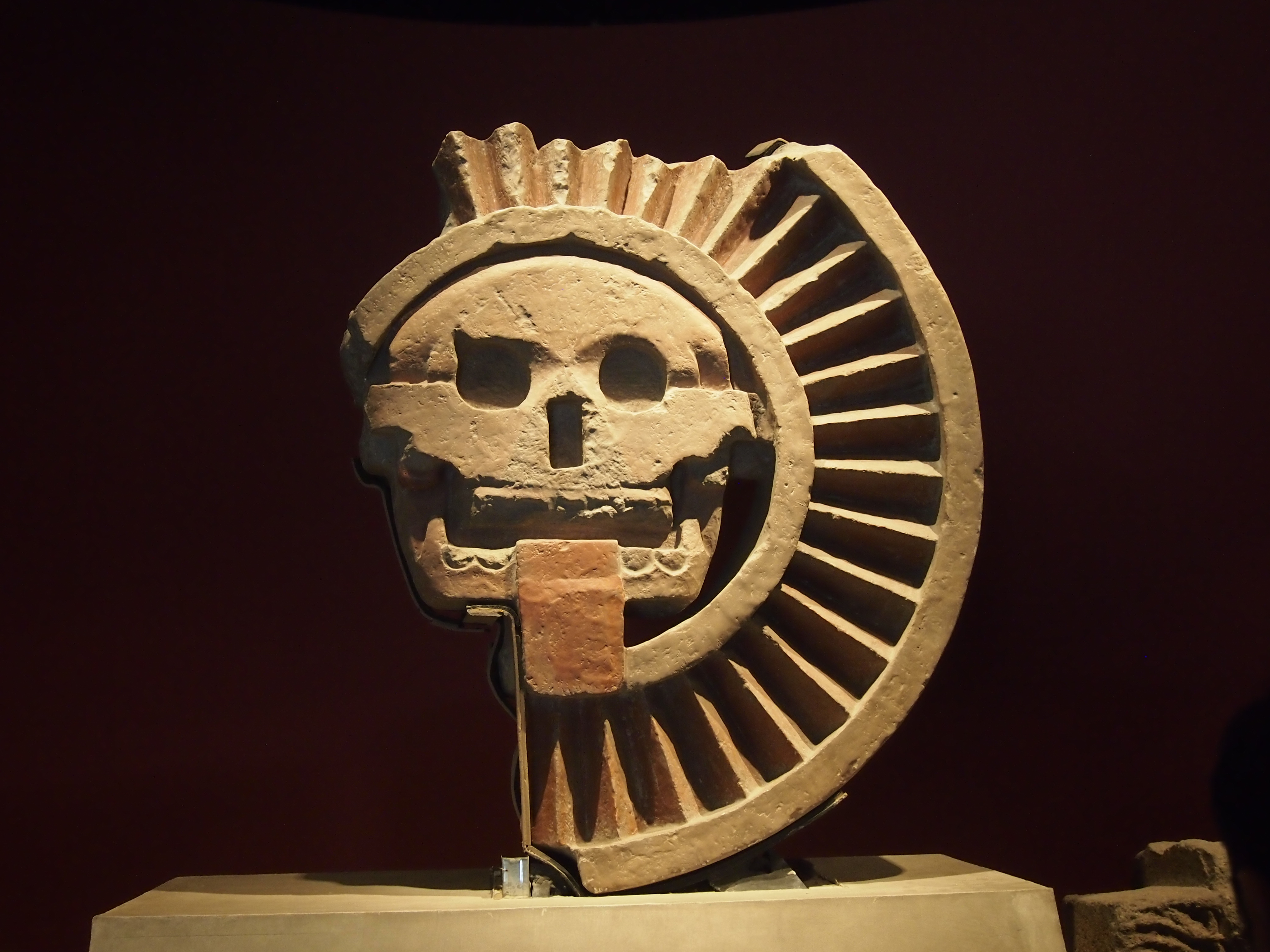 The people that built Teotihuacan — more about that place later, too — flourished in the early centuries of the common era, but the city was so completely abandoned 1,000 years later that even the Aztecs weren’t sure who had lived there.
The people that built Teotihuacan — more about that place later, too — flourished in the early centuries of the common era, but the city was so completely abandoned 1,000 years later that even the Aztecs weren’t sure who had lived there.
Here’s clear proof that ancient Mexico was visited by space aliens, right there in the museum.
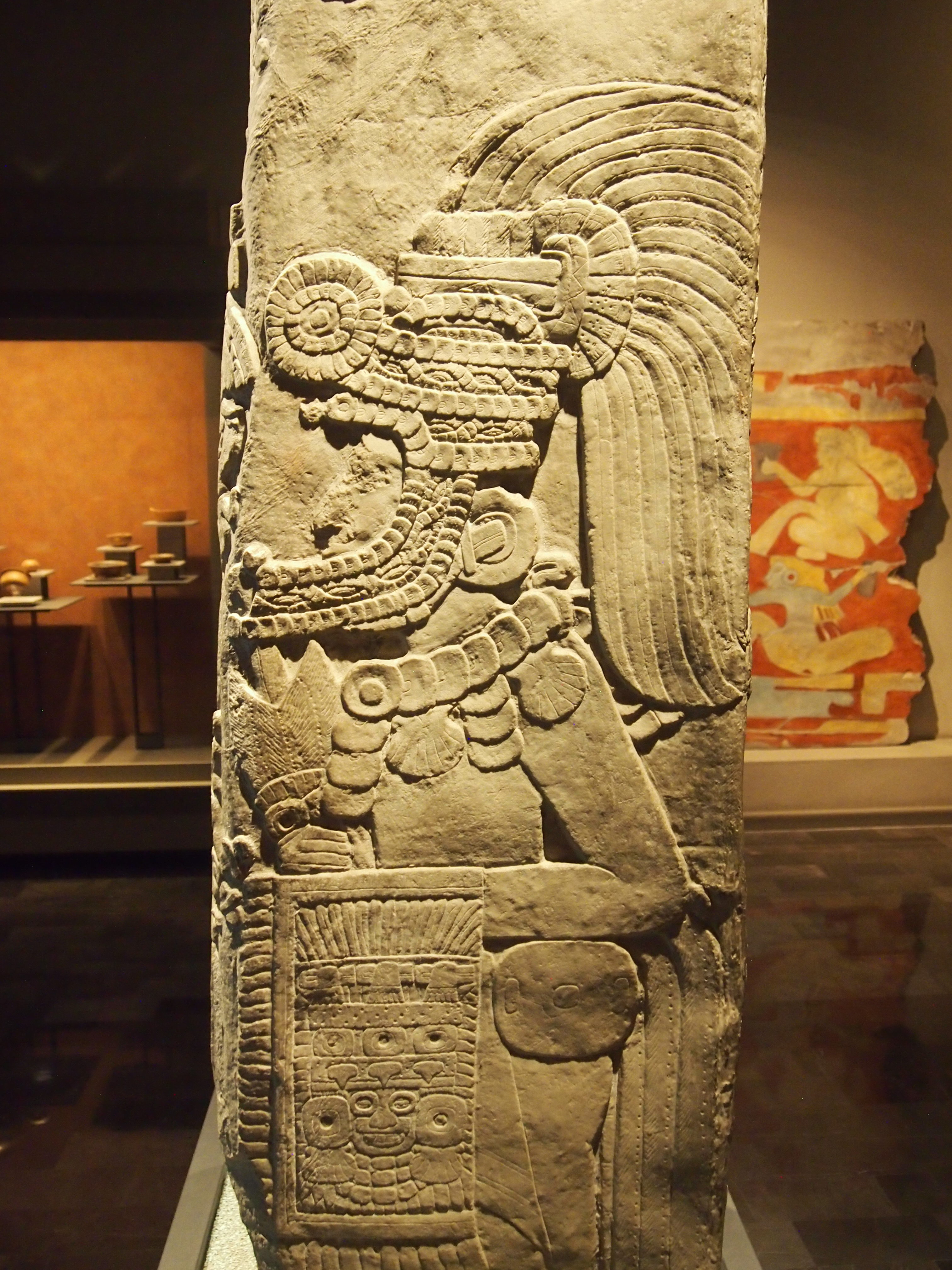 He’s wearing a space helmet, after all. What more evidence do you need, except maybe a bottle of Tang? I might be mistaken, but I think images of this very stela appeared in books and TV shows about ancient astronauts when I was a lad, a time when they were fashionable.
He’s wearing a space helmet, after all. What more evidence do you need, except maybe a bottle of Tang? I might be mistaken, but I think images of this very stela appeared in books and TV shows about ancient astronauts when I was a lad, a time when they were fashionable.
The idea lives on. Wrote one Paul Seaburn just last year: “So many statues, carvings, paintings and artifacts from the Mayans depict what appear to be aliens or alien spaceships, it’s hard to argue that all of them either have logical non-ET explanations or are hoaxes.”
I dunno, Paul, I don’t find it at all hard to argue the “non-ET explanations.”
Here’s El Creador, found in Morelos State and dating from the late first millennium of the common era.
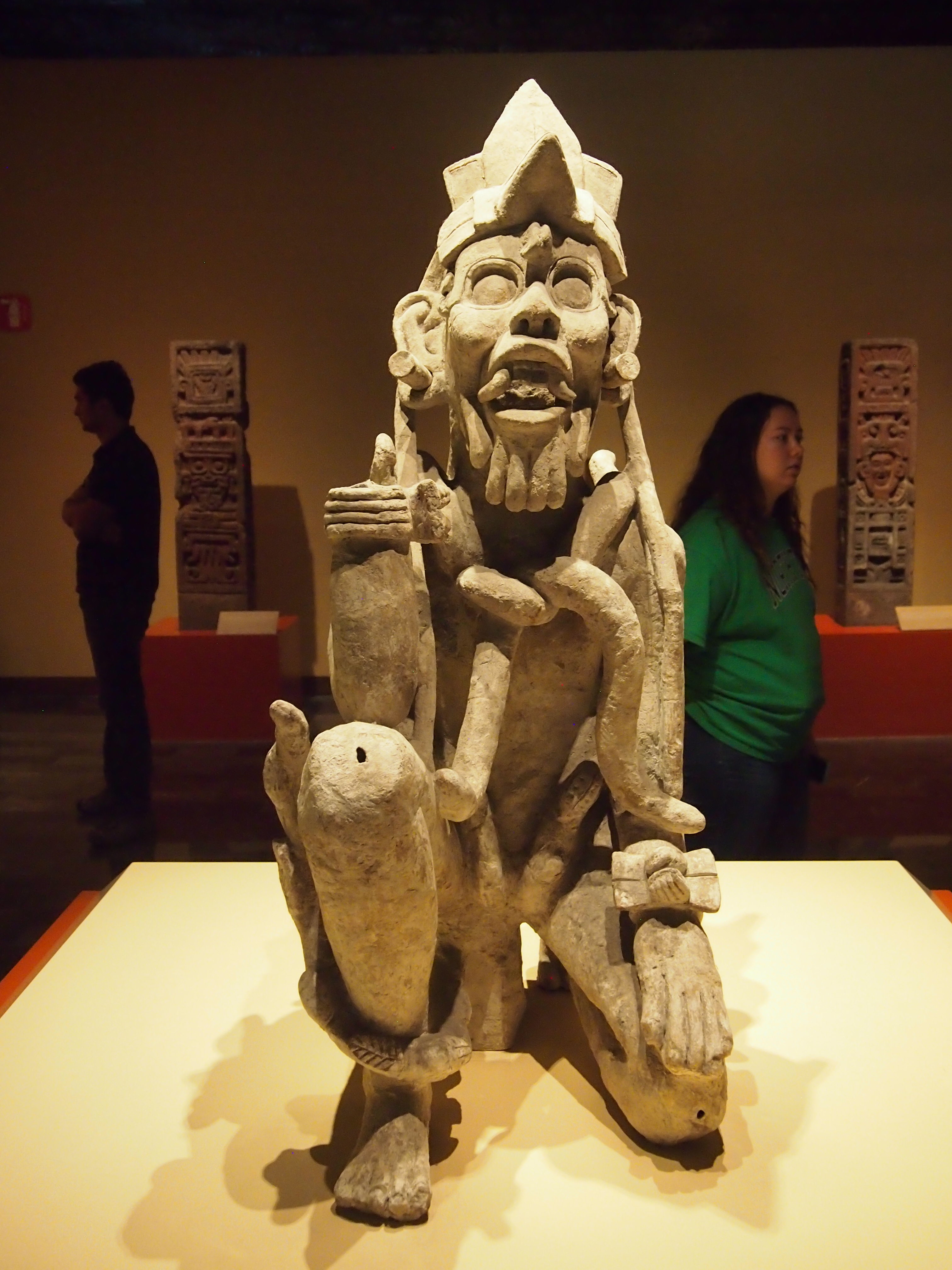 Here’s a figure found at the Templo Mayor, a site that’s been excavated in recent decades at the historic center of Mexico City.
Here’s a figure found at the Templo Mayor, a site that’s been excavated in recent decades at the historic center of Mexico City.
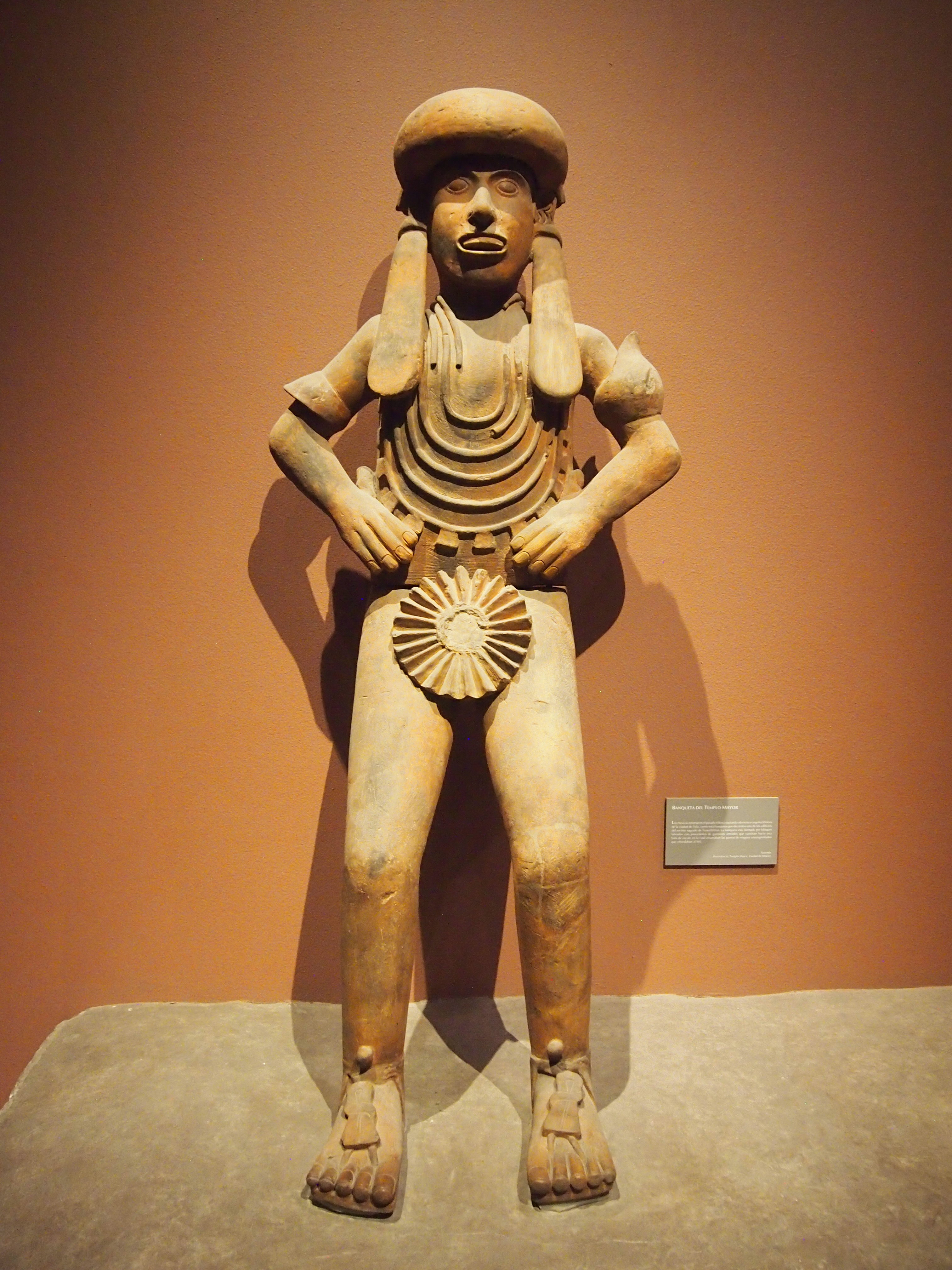 Speaking of which, I liked this model of Tenochtitlan.
Speaking of which, I liked this model of Tenochtitlan.
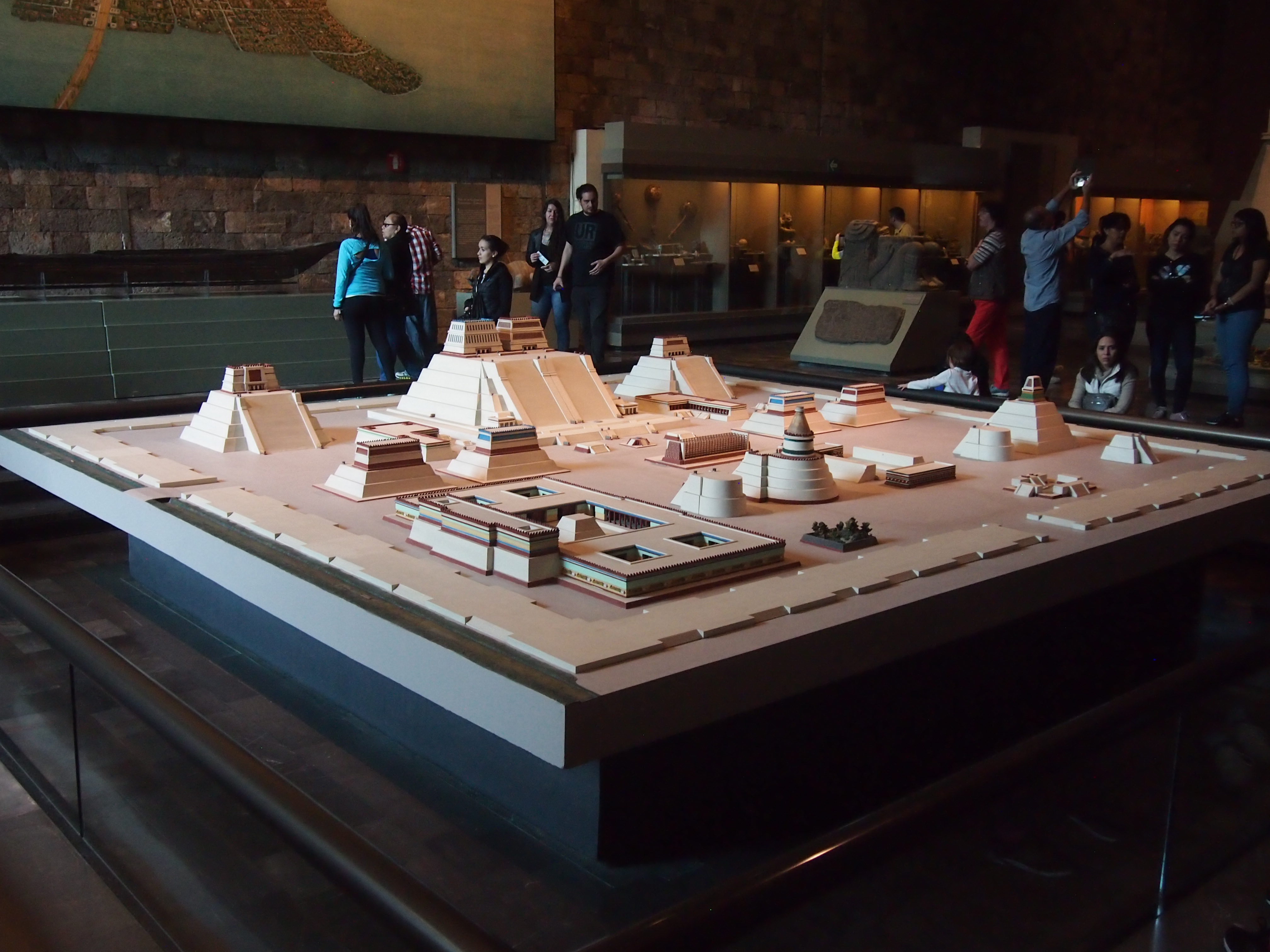 Finally — among the many, many things in the Mexia (Aztec) hall, is the Mona Lisa of the museum, so to speak: The Sun Stone, famed icon of Mexico.
Finally — among the many, many things in the Mexia (Aztec) hall, is the Mona Lisa of the museum, so to speak: The Sun Stone, famed icon of Mexico.
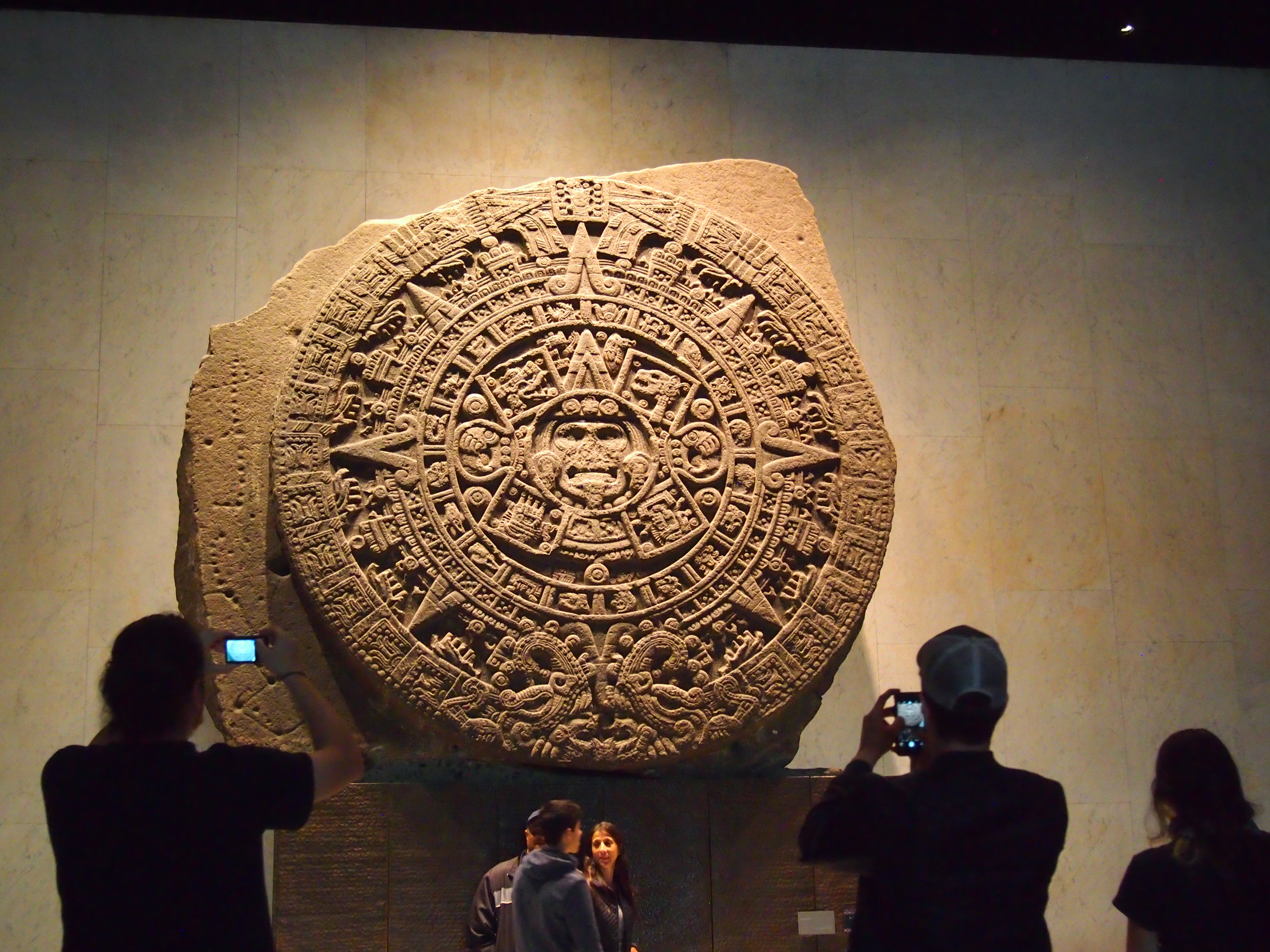 The Sun Stone certainly had a lot of admirers. I admired it myself. Maybe the Conquistadors did as well, since for some reason they didn’t destroy it, though the stone was eventually buried, only to be rediscovered near the end of Spanish rule, in 1790.
The Sun Stone certainly had a lot of admirers. I admired it myself. Maybe the Conquistadors did as well, since for some reason they didn’t destroy it, though the stone was eventually buried, only to be rediscovered near the end of Spanish rule, in 1790.
Much more about the Sun Stone is available online, including this article by an academic, Khristaan Villela, based in New Mexico. An artist’s interpretation of the central part of the stone is here.
“Since its rediscovery, the Calendar Stone has been displayed vertically, as if it really were a clock,” writes Villela, who refers to it as the Calendar Stone. “But the form and imagery of the sculpture closely link it to sacrificial altars, upon which the Aztec emperor, probably Moctezuma himself, ascended to sacrifice noble captives to feed the sun and earth.
“The most closely related monuments to the Calendar Stone are the Stone of Tizoc and the Stone of Moctezuma I.” Which happens to be only a few feet from the Sun Stone.
“Both are large basalt disks, with solar imagery on their upper faces,” Villela continues. “But whereas these other monuments display the conquests of Aztec rulers on the sides of their cylindrical forms, the Calendar Stone shows images related to the sky on its shallow carved side.”
